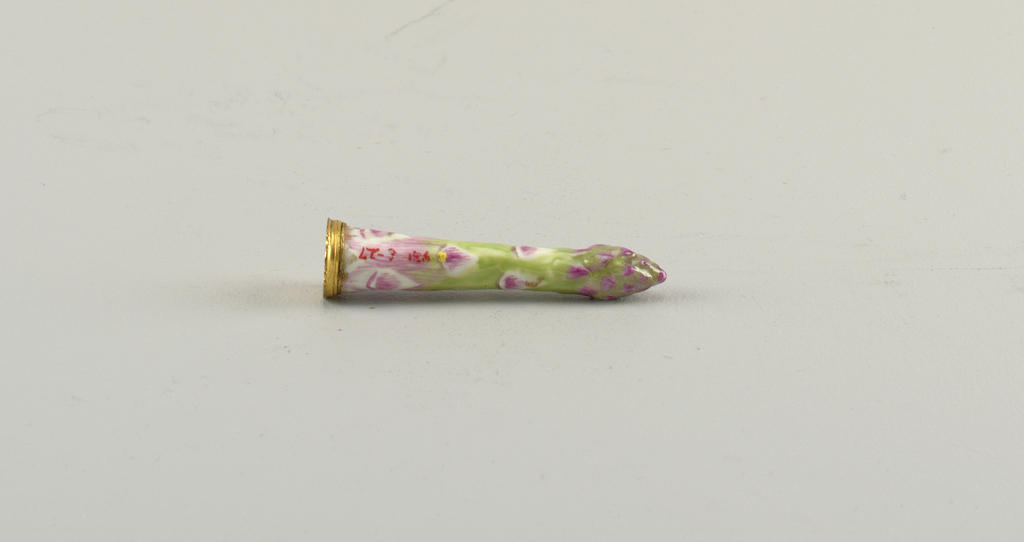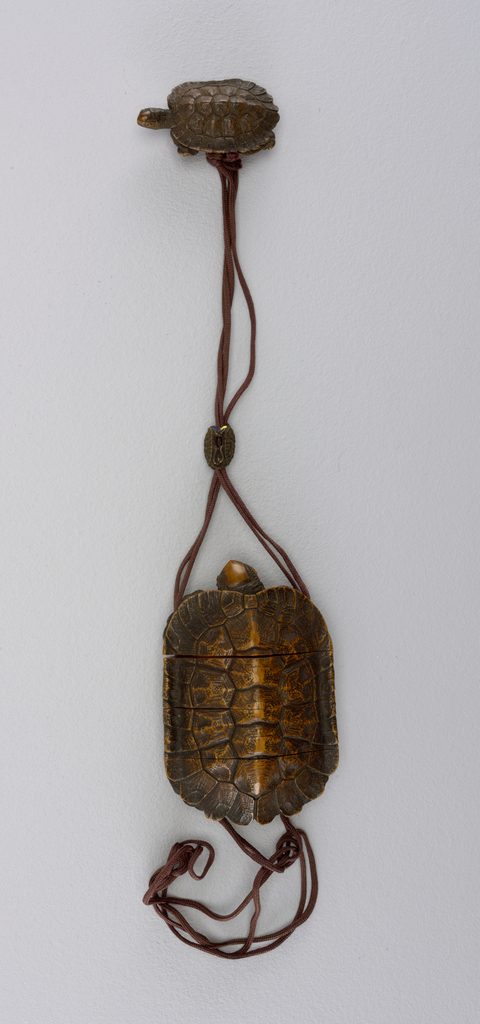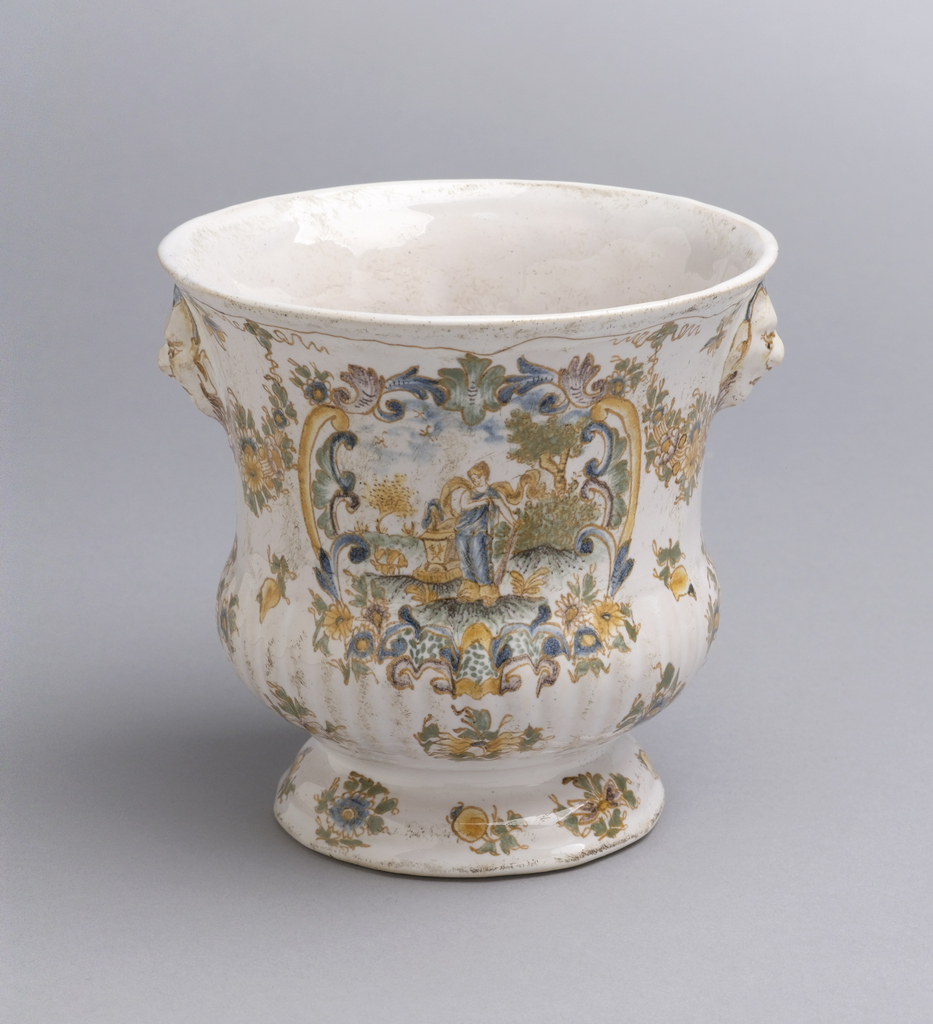Throughout March, Object of the Week celebrates Women’s History Month. Each Monday a new post will highlight women designers in the collection. In the tumultuous years following the 1917 Russian Revolution, a vibrant flourishing of avant-garde art emerged. Artists and designers embraced the most utopian hopes of the revolutionary spirit. They searched for new aesthetic...
Trompe-l’oeil ceramics such as this porcelain étui modelled after an asparagus tip were all the rage in Europe and England during the 18th century. Etuis are small ornamental personal cases that were used to carry toiletry items or sewing tools, and would have been used primarily by women. Other examples of trompe-l’oeil ceramics included tureens...
As part of Cooper Hewitt’s product design and decorative arts collection, this particular object is a rather unique representation of two historical elements: the design ingenuity of a British Quaker company that enjoyed tremendous success from its inception in 1822 onwards, and an architectural, decorative arts and design style known as the Egyptian Revival. Huntley...
Turtle-shaped and strung with carved toggles and cord, this object instantly piques the curiosity of the viewer. The diminutive lacquered wood sculpture is, in fact, a Japanese container, referred to as an inrō, which is composed of separate compartments and held together with a cord. These small containers were often used as medicine boxes, containing...
Small enough to hold in one’s palm and ornate enough to catch the eye of a passerby, this snuffbox is a combination of exquisite craftsmanship and subtle status symbol, as such containers often were in 18th-century Europe. The box is attributed to Johann Martin Heinrici, a Swiss artisan who worked at the famed Meissen porcelain...
In this age of electronic assistants, it is hard for many to fathom a time when telephone service was limited and mail, or what today is referred to as “snail mail”, was the order of the day. During the early decades of the twentieth century written letters were the most common form of communication, and...
In 1929, George Sakier was hired as a consultant for the well-established American glass manufacturer Fostoria, for whom he would work for the next fifty years. With a background as an art director of French Vogue, Harper’s Bazaar, and Modes and Manners magazines, Sakier’s commercial savvy as well as his eye for trends served him...
This beautiful birdcage comprised of glass, brass and plexiglass was designed by Charles Lin Tissot. Although best known for his domestic glassware designed for Steuben, this birdcage from the Glass Gardens collection is an escape to a realm of fantasy. This birdcage was produced during the years that Tissot collaborated with the Venini glassworks in...
This Jardinière was made of faïence, the French term for tin-glazed earthenware based on the name of a town in Italy-Faenza, with which its production is associated from the Middle ages and before. This example is from Moustiers, France, a town in the Alpine area in the southeast of France, where faïence has been made...
At first glance, you might think this is a sauce bowl or pitcher used at the dinner table. However, it is something quite different all together, and would most definitely be an unwelcome addition to a table spread. The bourdalou, in fact, was a type of chamber pot that was specifically used by women up...
You can use it to prepare a lovely jellied entrée made with crab or chicken, desserts made with fruit or, as a special holiday treat, with cat food, in homage to television’s Griswold clan’s Aunt Bethany. The star and Christmas tree molds suggest raspberry jello. Today’s food mold might only be seen in the most...
Pewter, an alloy of tin and lead, used to bring to mind matte, anthracite-grey mugs, flasks, and tableware susceptible to serving up lead poisoning, in addition to whatever else the kitchen had to offer. In other words, anything but this lozenge-shaped, organic biscuit box, marked “KAYSERZINN”. This perception was changed when Engelbert Kayser created “KAYSERZINN”...
This glass vase was made in the 17th or 18th century in Iran. It has a delicate applied glass rope ornament at the base of the neck, and is intricately decorated with gold enamel in a diamond and star pattern. The vase was free-blown, which means that it was produced without the use of a...
Over the next two weeks on the Cooper-Hewitt Design Blog, students from an interdisciplinary graduate-level course on the Triennial taught by the Triennial curatorial team blog their impressions and inspirations of the current exhibition,‘Why Design Now?’. If there is one design on view at the 2010 Triennial that affects the lives of every...













